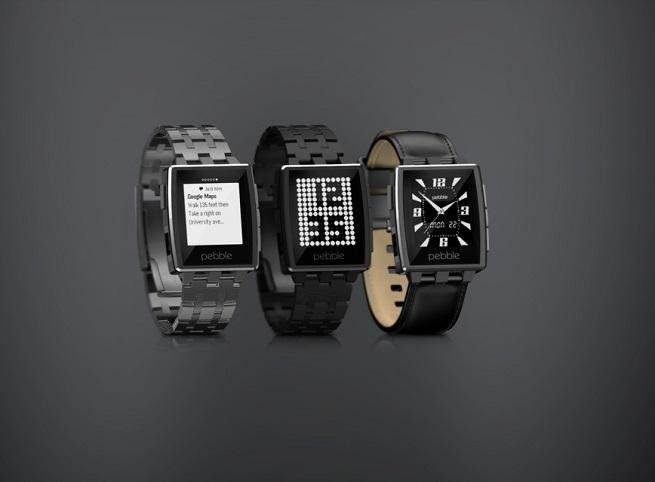Pebble

The Pebble smartwatch is a Kickstarter success story, and has sold more than 300,000 units since it started shipping last year. Pebble recently took its design up a notch with the Steel version of its smartwatch, and launched an app store to make its gadgets worth the $150-$249 price tag. Perhaps Samsung could take a few notes for its Galaxy Gear followup?
What were your business goals and objectives for your Kickstarter campaign?
“To give you some background, before launching Pebble there was InPulse, our first watch that was created for Blackberry. We had feedback from 1,500 customers on what improvements they were looking for in the product, which helped us created the Pebble.
While all the improvements for the Pebble watch from InPulse made sense, funding wasn’t happening. We went to Kickstarter to try our luck on getting funding from there. I had supported a project before on Kickstarter and realized that we could create a similar campaign to get funding for the new watch, Pebble.”
Why did you decide to seek funding on Kickstarter as opposed to seeking funding from investors or other more traditional sources?
“After InPulse, I went to VCs that had previously invested and in a month had pitched Pebble to VCs with no luck. We weren’t getting any funding the traditional ways and were running out of the funding we had left over. So with six months left of cash, we created a Kickstarter campaign.”
Many crowdfunding campaigns have difficulty gaining traction. Did you do any marketing or promotion to draw more traffic to your campaign?
“We spent about a month and a half working on the Kickstarter campaign - building a prototype, shooting the video, writing the text, taking photos, and designing the Kickstarter page and pledge levels. We looked at all the famous Kickstarter projects, the ones that were most successful, and took cues from their videos. Making a video that had a personal pitch and talked directly to your customers and viewers was really important. We promoted our campaign through media, and involved Engadget as our exclusive launch partner.”
Pebble received a ton of media mentions before, during and after the launch of your Kickstarter campaign. What do you attribute this to?
“We had a big effort to reach media, because the real thing that makes a Kickstarter project explode is how you drive traffic to your Kickstarter page. So we looked at every single blogger in the gadget space, and charted how often they wrote about Kickstarter projects. We had a list of 60 to 70 bloggers we approached when the project went live. We also decided to choose an exclusive launch media partner, Engadget, to announce the campaign. We worked with them for two months before we launched on Kickstarter. Their article went live at 7 a.m. on launch day, it drove the traffic and it blew up from there.”
What do you feel are some of the most common misconceptions with the crowdfunding process?
“Setting goals needs to be done carefully to make a Kickstarter project successful. Figure out how much your project will cost to design, build and deliver and set your goal there. Our goal was set at $100,000, but if we had set it at $1 million we might not have had the success we saw - people like to back a winner. I think it’s better to be conservative than overly-optimistic. The length of the campaign is also important. Kickstarter campaigns can be up to 60 days but closer to 30 days is best. You get a lot of media attention at the launch and then as you reach the end. Keep it short to keep it fresh.”
Hi! I am a robot. I just upvoted you! I found similar content that readers might be interested in:
https://www.huffingtonpost.com/michaelprice/heres-how-the-pebble-smar_b_5798406.html